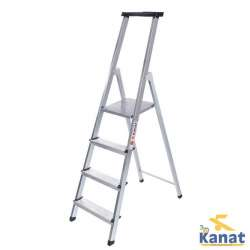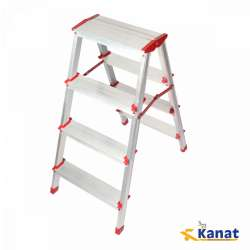
Ladder Safety: The Safe Use Of Ladders
Portable ladders are one of the most useful and simplest tools we use, so ladder safety should not be ignored. Because of their function, ladders are used by many different people to perform many different jobs. Although they are very simple tools, planning and care are also necessary to use them safely.
Ladders should be inspected for visible defects before each use. Ladder accidents are usually not due to manufacturing defects but to the use of ladders that are not suitable for the relevant purpose or to ignore the visible damage.
What Should Be Considered When Using Ladders?
For every 4 meters, an opening of 1 meter should be left in the ladders. This is also called the 4- to-1 rule. Ladders should not be installed on unsafe floors or on improper supports. In addition, the ladder should not be climbed when there is a load on the hand. When climbing ladders, it is necessary to hold on to the steps, not the side railings.


In case of slipping foot from the ladder, it is easier to hold on to the steps than to hold on to the side railings. It is not possible to provide this when there is a load in the hand. Keep two hands and one foot or two feet and one hand on the ladder at all times. Establishing a three-point contact on the ladder ensures a healthier and also safer climb.
In order to prevent slipping, its steps must be suitable for climbing. For this, you can opt for ladders with plastic steps. There are also models that require you to get support from somewhere, as well as self-supporting models. You can consider them according to the area you will use.
A ladder is a tool that varies according to the work in which it will be used. Ladders can also be used for electrical faults, for the repair of anything that is located in a high place, and difficult to access. For such work, you can opt for ladder models with a toolbox putting table. The points to be considered in the use of these ladders are;
- You should be careful to make your movements carefully.
- You can choose a shoe with an anti-slip sole to prevent slipping, or you can take care that the step is made of non-slip material when taking ladders.
- Ensure that all electrical equipment used during operation on the ladder is properly grounded.
Slightly different from the classic ladders, sliding ladders are tools that allow the use of the ladder in adjustable lengths. You can use it when painting, perhaps when repairing your roof. Sliding ladders are not self-supporting. Therefore, it requires a solid structure to be based on. The place where the ladders will stand should not be of a fragile or slippery structure. You should definitely check whether the locks of the sliding ladder you use are in solid condition before each use.
Things To Consider For Ladder Safety
- Ladders with damaged steps,
- Use of stairs that are not suitable for work,
- Very upright installation,
- Not to install on a fixed surface (installation in a gravel place, etc.),
- Slippery we install on the ground (icy places etc.),
- Using unsafe places as support (getting support from windows, etc.)
In these cases, the ladder, which is one of the simple tools, can become dangerous for us. With the measures to be taken, we can prevent ladder accidents and ensure safe use.
- Ladders with damaged steps should be repaired immediately.
- No ladders should be placed on slippery or moving surfaces.
- If the ladder has to stand on objects such as poles and columns, the upper step of the portable ladder should be connected with a chain or rope to reduce swaying when working on it.
- On sliding ladders, make sure both locks are held to prevent overloading a rail.
- Electric shock may occur on metal or wet ladders. Therefore, do not use wet ladders and take the necessary precautions in electrical work.

